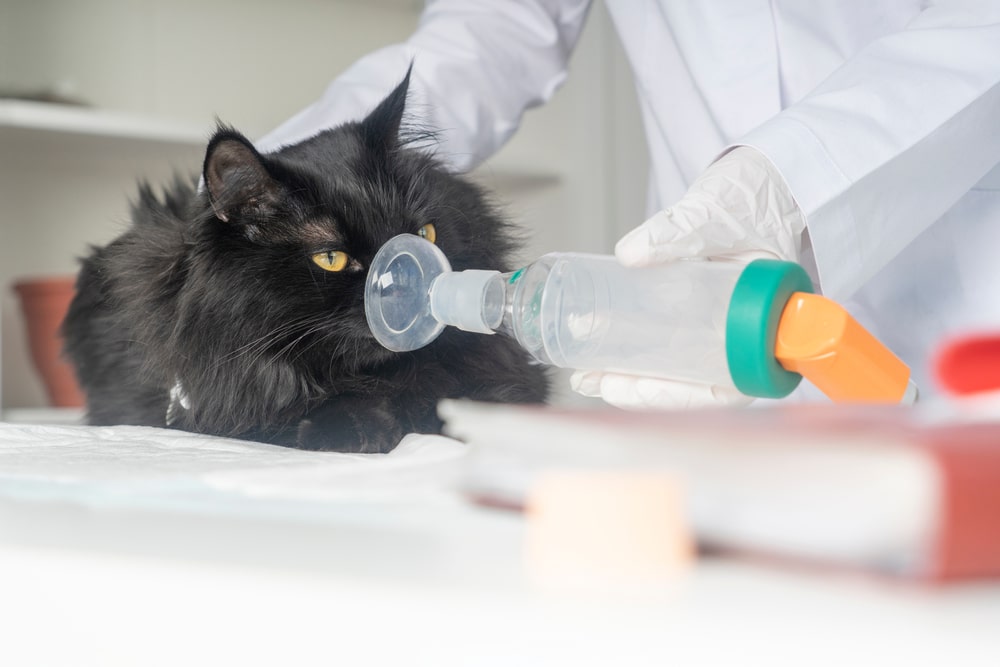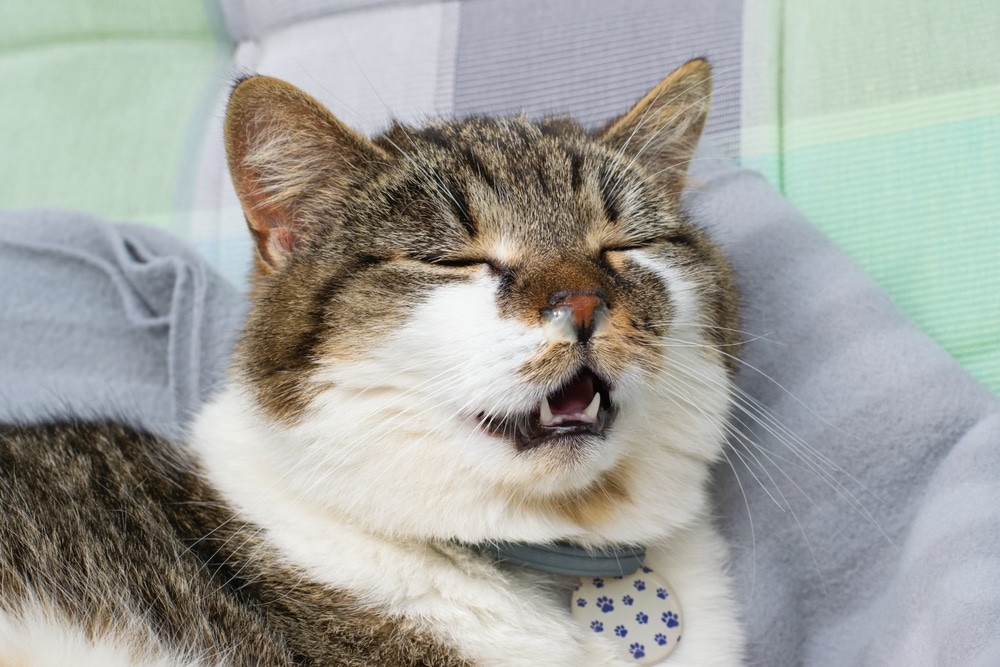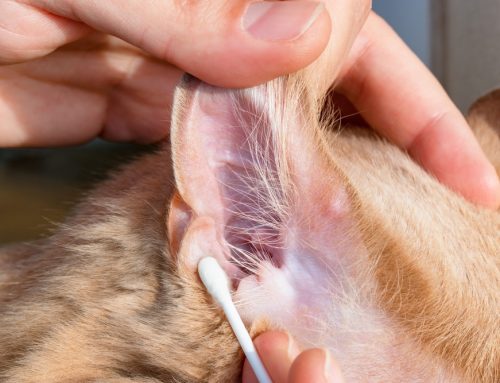Upper Respiratory Infections in Cats: Symptoms and Support
When your cat starts sneezing, sniffling, or turning away from the food bowl, it’s hard not to worry. At South Shores Pet Clinic, feline upper respiratory infections (URIs) are one of the most common issues we treat- especially after boarding, in shelters, or in multi-cat households. These infections may look like a minor cold at first, but they can progress quickly and make your cat feel miserable. Here’s what you need to know to spot the signs early, understand the risks, and support your cat through recovery.
What Is an Upper Respiratory Infection in Cats?
Feline URIs affect the nose, throat, and sinuses, and often show up as sneezing, watery eyes, and congestion. They’re incredibly contagious, spreading quickly through direct contact or shared spaces. In most healthy adult cats, symptoms are mild and self-limiting. But for kittens, senior cats, or those with weakened immune systems, these infections can lead to complications like pneumonia or chronic respiratory issues.
Some viral infections, like feline herpesvirus, can remain in the body and flare up during periods of stress. Others, like calicivirus, can cause oral ulcers and systemic illness in addition to respiratory signs.
What Causes URIs in Cats?
Most URIs are caused by viruses, including feline herpesvirus (FHV-1) and feline calicivirus (FCV), but bacteria often play a secondary role. Bordetella bronchiseptica is one such bacterial culprit- International Cat Care notes that while it’s more commonly associated with dogs, it can also affect cats, particularly those in group housing. Chlamydophila felis and Mycoplasma species are also frequent contributors, particularly in stressful or crowded environments.
Cats with Feline Immunodeficiency Virus (FIV) or Feline Leukemia Virus (FeLV) are especially vulnerable. These chronic infections suppress the immune system, making it harder for the body to clear even mild infections.
Why Prompt Attention Matters
It might start with just a sneeze, but that can quickly progress to nasal discharge, congestion, fever, or even difficulty breathing. In cats, a diminished sense of smell often leads to loss of appetite, which can quickly snowball into dehydration and worsening illness. URI symptoms can also mimic more serious issues, so it’s important to get a veterinary assessment early. In some cases, respiratory distress may occur, particularly in young or immunocompromised cats- this is an emergency! AAHA offers a helpful resource for recognizing these signs at home.
How a URI Progresses and What to Watch For
Symptoms usually begin with sneezing and watery eyes. If the infection worsens, discharge may become thick or yellow-green, and your cat may develop ulcers in the mouth (especially with calicivirus). Labored breathing or fever can indicate a deeper infection. Cats may also hide, refuse food, or seem lethargic- especially those managing other illnesses.
The risk increases when cats are stressed, such as after a move, new pet introduction, or time at a boarding facility. Cats already carrying herpesvirus may show recurring symptoms even years after the initial infection. According to Cornell’s Feline Vaccination Guide, routine vaccinations can reduce symptom severity and disease spread but don’t guarantee total immunity.
Diagnosis and Care at the Clinic
At South Shores Pet Clinic, we begin with a full exam and health history. This may include a fever check, chest auscultation, oral exam, and sometimes PCR testing to identify the exact virus or bacteria. If we suspect pneumonia or a more serious complication, X-rays may be needed. Bloodwork can help us rule out other issues like anemia or systemic infection, especially in cats with chronic conditions.
Helping Your Cat Recover
Supportive care is usually the foundation of treatment. Hydration and nutrition are critical- encouraging your cat to eat with warmed wet food or tuna can make a big difference. A humidifier or steam-filled bathroom can ease congestion. If a bacterial component is suspected, we may prescribe antibiotics. For severe or chronic herpesvirus cases, antivirals or L-lysine supplements may be helpful. Some cats need hospitalization for oxygen therapy if breathing becomes difficult.
What If It Goes Untreated?
URIs can become serious if ignored. Pneumonia, chronic nasal inflammation, and secondary infections are all potential complications. Some cats develop permanent congestion or sneezing due to scar tissue in the nasal passages. In cats with suppressed immune systems, the infection can become life-threatening.
Supporting Recovery at Home
Create a quiet, warm space with soft bedding and minimal stress. Keep food and water bowls clean, wipe away nasal or eye discharge with a warm cloth, and monitor your cat’s appetite closely. You can also use a humidifier or let them relax in a steamy bathroom to help break up mucus. Keep a daily log of appetite, activity, and any concerning changes. If your cat isn’t improving or begins to have trouble breathing, we want to see them right away.
Preventing Future Infections
Vaccines are a vital part of prevention. The AAHA vaccine guidelines recommend the FVRCP combination vaccine to protect against herpesvirus and calicivirus. Isolate new pets until they’ve been examined and vaccinated, and keep household stress low. Regular wellness exams can help identify underlying vulnerabilities before they lead to more serious problems. Visit our preventative care page for more information about how we protect your cat’s long-term health.

When to Call the Vet
A mild URI may resolve with care at home, but signs like labored breathing, refusal to eat, or worsening discharge require veterinary attention. Bring notes on symptom timing, behavior changes, and any previous history of illness. If your cat’s breathing appears fast, shallow, or noisy, treat it as urgent.
We’re Here When You Need Us
At South Shores Pet Clinic, we’re here to guide you through your cat’s illness with empathy and expertise. Whether this is your first URI or part of a chronic issue, we’re ready with diagnostic tools, treatment options, and the support you need to help your cat feel better. Schedule an appointment today or reach out with questions- we’re here to help your cat breathe easier and recover fully.







Leave A Comment